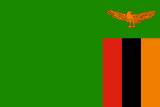
Zambia
Voter registration and identification
E-voting
Processing of results
Usage of open source software in election administration
Online data publication by EMBs
| Question | Value |
|---|---|
How is the national electoral register created? |
|
If electoral register is created by the EMB, which method is used? |
|
If electoral register is created by the EMB, what type of technology used for collecting registration data? |
|
If the EMB uses technology to collect voter registration data, is biometric data captured and used during registration? |
|
Is the biometric data used in voter identification at polling stations? |
|
Is technology used for identifying voters at polling stations (electronic poll books)? |
|
How technology is used in relation to paper voter lists? |
| Question | Value |
|---|---|
Is e-voting currently used in any elections with EMB participation? |
|
If e-voting is currently being used, what type(s) of technology used? |
|
If e-voting is currently being used, is it taking place in controlled or uncontrolled environment? |
|
If e-voting is currently being used, is it available for all voters or only some groups of voters? |
|
If e-voting is NOT currently being used, what is the current status of e-voting in general? |
| Question | Value |
|---|---|
Are official election results processed by an electronic tabulation system? |
|
If official election results processed by an electronic tabulation system, at which level results are entered into an electronic tabulation system? |
|
In the last national election, how many days did it take for the EMB to establish final results? |
|
In the last national election, how many days did it take for the EMB to announce certified results? |
| Question | Value |
|---|---|
Does the country use open source software in electoral processes? |
|
What are the key reasons for or against using open source systems? |
|
What types of open source systems have been considered or used? |
| Question | Value |
|---|---|
Does the country provide individual online voter registration/polling assignment checks? |
|
Does the country publish the statistical overview of voter lists online? |
|
Does the country publish full voter registers at the polling station level online? |
|
Does the country publish full voter registers at the national level online? |
|
Does the country publish the lists of parties and/or candidates registered for elections online? |
|
Does the country publish the election (voting) results online? |
|
If the country publishes the election (voting) results online, what is the level of aggregation? |
|
If the country publishes the election (voting) results online, what is the level of detail? |
|
If the country publishes the election (voting) results online, what is the timing of publication of results? |
|
If the country publishes the election (voting) results online, are historical results also available? |
|
Does the country publish seat allocation data online? |
|
Does the country publish candidate/party financing reports online? |